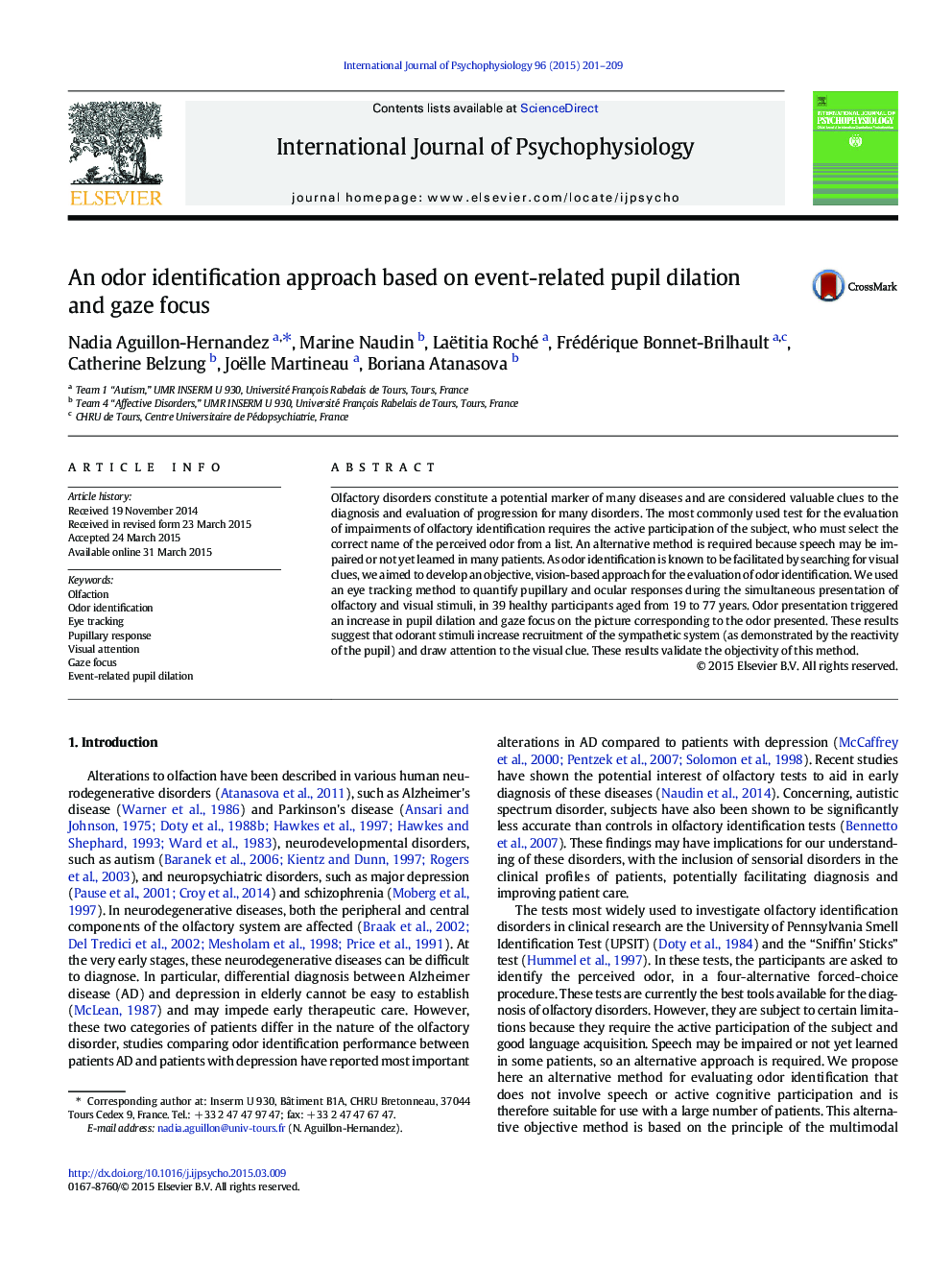| Article ID | Journal | Published Year | Pages | File Type |
|---|---|---|---|---|
| 931044 | International Journal of Psychophysiology | 2015 | 9 Pages |
•This study aims to develop a vision-based test to evaluate odor identification.•We recorded pupil and gaze during olfactory stimulation in healthy adults.•Odor induced a pupil dilation and gaze focus on a picture congruent to the odor.•Correlations between pupil, exploration time, and odor features were found.•Olfactory identification induced pupil dilation and gaze focus to the visual clue.
Olfactory disorders constitute a potential marker of many diseases and are considered valuable clues to the diagnosis and evaluation of progression for many disorders. The most commonly used test for the evaluation of impairments of olfactory identification requires the active participation of the subject, who must select the correct name of the perceived odor from a list. An alternative method is required because speech may be impaired or not yet learned in many patients. As odor identification is known to be facilitated by searching for visual clues, we aimed to develop an objective, vision-based approach for the evaluation of odor identification. We used an eye tracking method to quantify pupillary and ocular responses during the simultaneous presentation of olfactory and visual stimuli, in 39 healthy participants aged from 19 to 77 years. Odor presentation triggered an increase in pupil dilation and gaze focus on the picture corresponding to the odor presented. These results suggest that odorant stimuli increase recruitment of the sympathetic system (as demonstrated by the reactivity of the pupil) and draw attention to the visual clue. These results validate the objectivity of this method.
